Amazing nature #11 - 10 things about pandas 🐼
We explain everything about the panda bear, where it lives, why it is in danger of extinction and what its main characteristics are.
It is estimated that there are only 2000 specimens left living in the wild.
The panda bear, an oriental icon
The panda bear, also known as Panga Gigante (Ailuropoda melanoleuca) is a mammal easily recognizable by its black and white coat with distinctive markings, its docile character, and its great beauty.

In Chinese culture, with which it is deeply associated, it is also known as a bear-cat, because of the shape of its eyes (small and elongated) that resembles that of felines.
Characteristics of the panda bear
Table of Contents
Origin
Habitat
Life expectancy
Appearance
Size, weight, and height
Behavior
Food
Customs and breeding
Threat of extinction
The red panda bear
Origin
It originates from the east, (central China and Tibet), territories with height from 1200 to 4100 MSNM, between six mountain ranges (Minshan, Qinling, Qionglai, Liangshan, Daxiangling, and Xiaoxiangling).
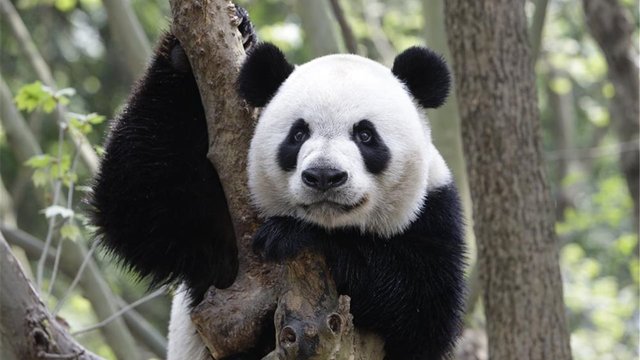
Before human population growth and the devastation of its natural habitats, it also thrived in southern and eastern China.
Habitat
The destruction of bamboo forests put this species in danger of extinction.
Its ideal habitat is bamboo forests, mountainous, humid and cool areas that provide food and shelter. It manages to adapt to captivity, which is of great importance due to the constant threat of extinction of this species as a consequence of the loss of its natural habitat.
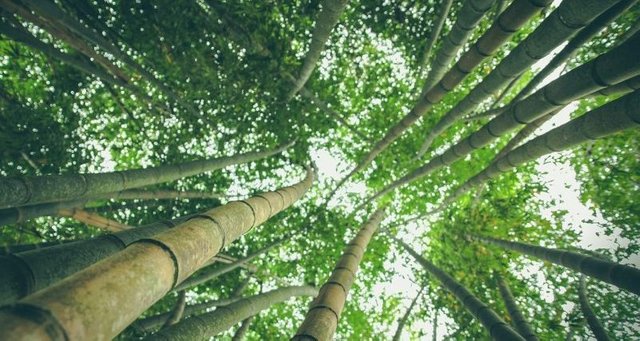
Life expectancy
In its natural state, the average life expectancy of a panda bear is about 15 years. Thanks to medical and effective care in the captive zones, their life expectancy can be prolonged up to 30 years.

The panda calf normally lives with its mother until three or four years of age (sometimes around six years of age, at sexual maturity).
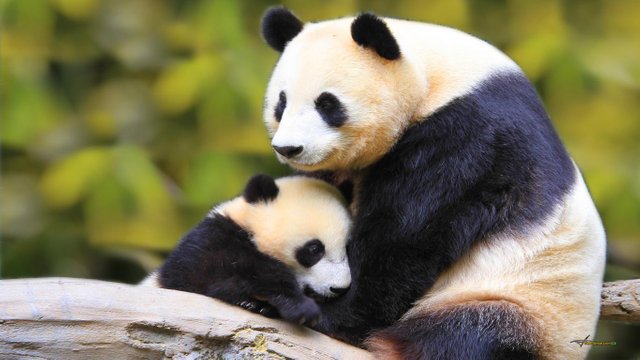
The high infant mortality in this species has reduced the development of the species: in captivity, only 30% of live births survive.
Appearance
It is characterized by its white coat and black spots in a very distinctive pattern: on the extremities, back, and around the eyes, which allows it to camouflage itself in the snow and in the jungle. Its thick coat (and body fat) provides shelter and protection.

Size, weight, and build
On average it is between 1.2 and 1.9 meters long. Its average weight is 110 kg. Its front legs are long and very muscular, and allow it to climb and defend itself.
A distinction of the species is the existence of a sixth hind toe on its legs (an adaptation of its wrist bone), which it uses as a thumb to grasp its food.
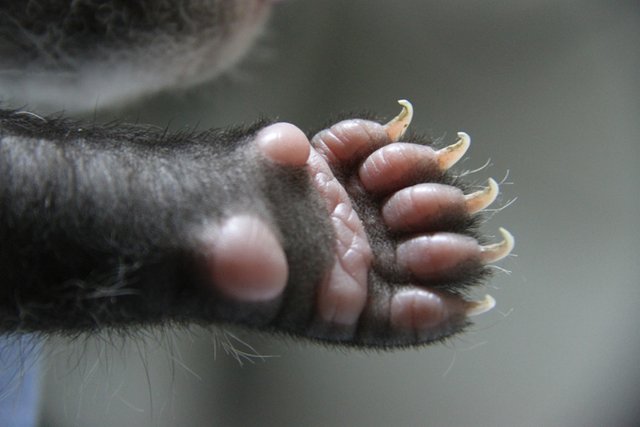
Behavior
It's peaceful and sociable. It is recognized as a solitary animal: in natural environments, it delimits its territory with claw and urine marks. Unlike other bears, the panda does not hibernate but descends to more temperate zones in the cold months.
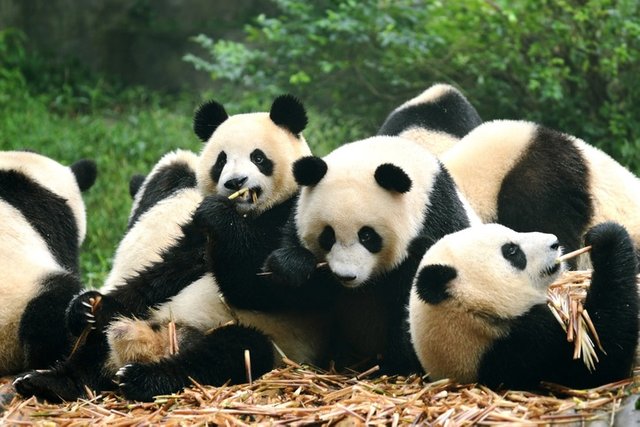
Meat, plants, fruits, eggs, and bamboo are some of the components of your diet.
Although it is related to the consumption of bamboo, the truth is that this bear is omnivorous, adapts its diet to the provisions of the environment, and its diet includes meats, plants, fruits, eggs, and bamboo.

He can consume up to 14 kg in addition to 5 or more kg of other foods per day.
Customs and breeding
Females have between four and six puppies in their lifetime.
The panda bear is very docile and tends to play, both in captivity and in its natural state (mothers with their offspring). He enjoys swimming and that allows him to fish for food.
Females mature sexually at the age of four and are fertile only three days per year. Calves are often born in pairs, but the mother's attention (feeding and care) usually focus on just one calf, so almost half of the wild pandas die before they reach maturity.
Threat of extinction
The panda bear is in danger of extinction due to deforestation of its natural habitat and poaching. Reproduction in captivity is often more difficult, which also threatens the continuity of the species.

The red panda bear
The red panda weighs 6 kg while a giant panda can reach 120 kg.
The red panda, or small panda, is characterized by its smaller size, reddish fur, and long, ringed tail. Its shape is more similar to a raccoon than a giant panda, but it shares the sixth finger.


It normally inhabits Asia: from the Himalayas and northern Burma, the area of Nepal, Sikkim (India), Sichuan and Yunnan (China).
Thank you for reading 😊


If you liked reading this article, feel free to FOLLOW ME, UPVOTE and RESTEEM! It's always appreciated =D. Thank you all for your support and see you soon for the news flamingirl's adventures!


ooooooh <3 the hands :D ...and the red one!
😍😍😍
Hello dear, happy thanksgiving, my best whishes
Posted using Partiko Messaging
Thank you so much for your nice comment my friend!
Hi, @flamingirl!
You just got a 0.17% upvote from SteemPlus!
To get higher upvotes, earn more SteemPlus Points (SPP). On your Steemit wallet, check your SPP balance and click on "How to earn SPP?" to find out all the ways to earn.
If you're not using SteemPlus yet, please check our last posts in here to see the many ways in which SteemPlus can improve your Steem experience on Steemit and Busy.